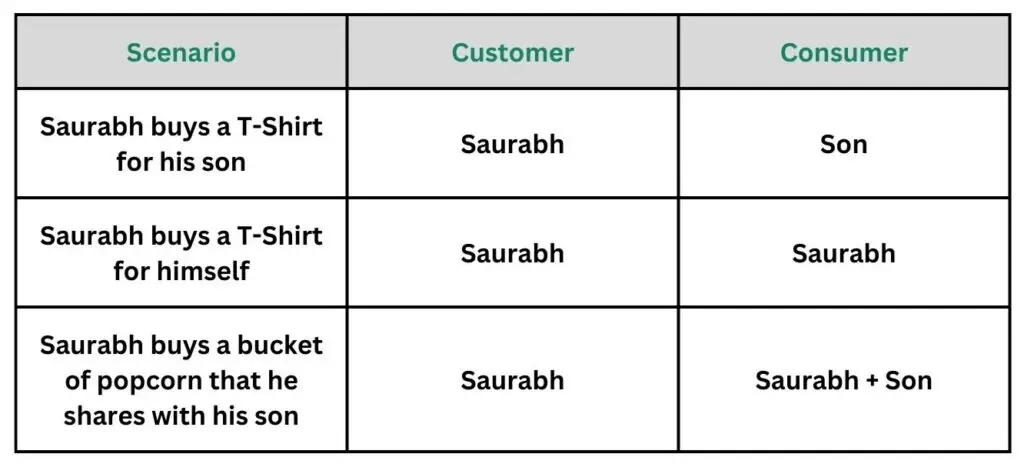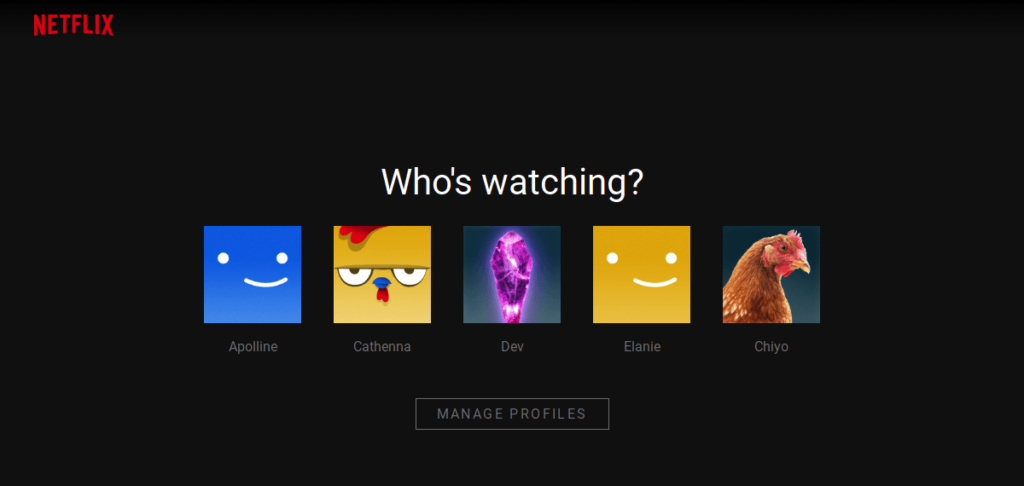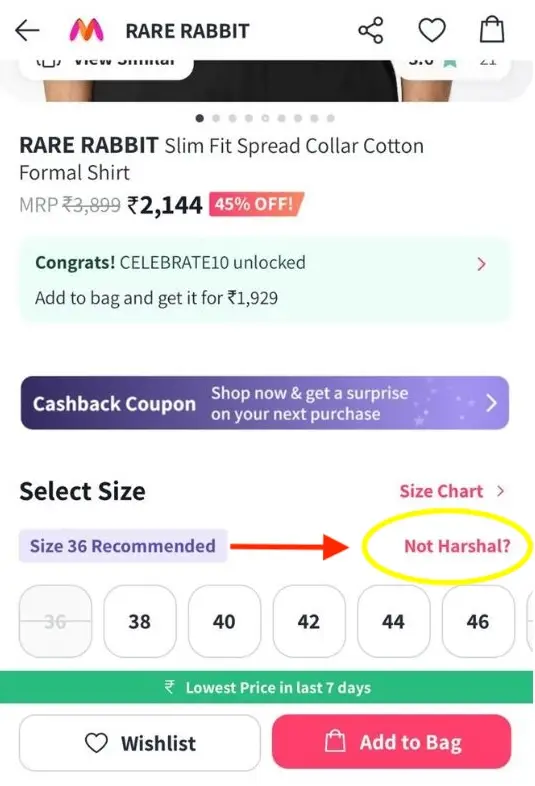Introduction
Any digital marketing campaign is built around the customer which is the audience. We look at the data to identify them. But is it really always clear? Imagine this- a campaign for lipstick is meant for women, so we begin by targeting women, but can we assume for a fact that she is the customer and consumer both? Perhaps the customer is a woman’s husband or partner, because they share the loyalty card for that marketplace which is in the partner’s name.
It is a compounded challenge for marketers when developing marketing strategies of multi-brand retail stores or big marketplaces that have a wide range of products meant for different consumers. Eg Shoppers Stop, Myntra, Amazon, Lifestyle etc.
How do we build robust data capturing systems to develop a marketing strategy in such cases? It is a problem if we are not able to bring out a distinction between customer and consumer. Brands are constantly looking to target their audience better, could this distinction be the key to personalisation?
Difference between Customer and Consumer
Let’s take the example of Saurabh who has a son and they’re out shopping-

We intuit that these differences arise when we’re making purchases for people, or when we’re gifting. But often this difference arises out of brand induced actions such as a loyalty program or rewards and points card.
Often one member of a family avails this card and others use it, or perhaps it is shared amongst friends. These cases are all too common and the customer and consumer distinction blurs, and it can be catastrophic if the brands do not make any differentiation between customer and consumer.
Think of Netflix and other OTT platform ID sharing where a singular customer ID is used by many to consume entertainment.
On the other hand, the financial services industry is one where the customers and consumers are clearly defined. E.g. your bank account is meant for your usage only, you are the customer and the consumer in most use-cases of the account.

Why it is important to understand the audience?
The lens of customer vs consumer is an important tool to identify the audience that can bring more business to you. E.g. a person who purchases for himself and his family of 5. An analysis of his purchasing history can help identify the needs of the other consumers in his family; whereby the right products can be suggested in further engagement on the marketplace app or website. Since such a customer can provide a higher lifetime value, marketers must tap into this analysis and hone their marketing strategy.
Gaining insights into the distinctions between consumer behaviour and customer actions can significantly enhance your communication strategies with your target audience. It is an important first step to perform so that using data analytics the right recommendations can be given to customers/consumers. This is especially crucial in a world with so many options available to purchase.
Marketers need to identify their audience clearly, and they can not assume that the customer is the end consumer
How to approach Customer v Consumer lens?
Demographics:
Demographic-based targeting is useful in telling us about the broad indicators of customers such as age, income, gender, education level etc. They are extremely useful for static products that do not require any customization.
However, demographics will never be able to tell us about how customers think, feel and behave. With what intent customers make a purchase, becomes vitally important especially when 62% of consumers would stray from brands that failed to deliver personalized experiences. (Source: Statista)
Intent and Behaviour:
Marketers must instead shift focus on intent-based targeting which involves analyzing an individual’s online searches, content consumption, and website interactions to deliver targeted messages that are highly personalised. Keeping an eye open for purchasing patterns that blur the line between customer and consumer is a must.
Intent-based targeting allows brands to focus their energy on the total addressable market. Attached to each customer is a set of consumers too.
Analysing behaviour allows brands to suggest complementary products that customers frequently purchase together, e.g. people who buy reading glasses may also be interested in purchasing progressive eyeglasses, or people who buy jewellery might also be interested in buying beauty products.
This building of associative categories can help churn better business and is possible only through behaviour and intent-based analysis.
Brands must formulate a framework with the following components in mind for effective segregation of data-
- Transactional Data
- Order Details: Analyzing order details reveals who placed the order (the customer) and items purchased. If the purchased items are typical end-use goods (e.g., clothing, electronics for personal use, food), it’s likely the customer is also the consumer.
- Shipping and Billing Address: If the shipping address differs from the billing address, it signals potential gift purchases or items sent to a business. The recipient, in this case, becomes the consumer.
- Repeat Purchases: Frequent purchases of specific items often indicate direct consumption by the customer.
2. Engagement and Behavioral Data
- Website Interactions: Tracking how visitors (before and after a purchase) interact with product pages provides valuable insights. High engagement with product reviews, descriptions, and features suggest the buyer might be the end-user.
- Product Reviews: Customers likely to be the consumers will often leave product reviews reflecting their personal experiences.
- Social Media Mentions: Monitoring social media tags, mentions, and reviews linked to purchases can reveal if different people are using the products than those making the purchase.
3. Customer Profiles and Surveys
- Profile Information: Asking customers optional questions during account creation like “Are you purchasing for yourself or someone else?” can offer direct insights.
- Post-Purchase Surveys: Brief surveys inquiring about the product’s intended use help determine whether the customer is also the consumer.
How brands are tackling the Customer V Consumer shifts?
The creation of profiles on a single account is a great strategy that many brands have adopted to segregate customers and consumers. This leads to a shopping experience that is more organic and responsive in nature.
For streaming services like Netflix and Amazon Prime Video the creation of profiles on a single customer ID has been useful in personalizing recommendations.
It is not just streaming platforms that are using this technique but also fashion companies like Myntra that are using profiles to enhance shopper experience. Swiggy has a mechanism to “order for someone else” which captures data of the consumer and customer, who are different parties.
With separate profiles, companies can get a deeper idea about households, the behaviours of the members, leading to far better product recommendations, increasing conversions and overall customer satisfaction.
Profiles are not a fullproof solution to understanding the line between customer and consumer but it does provide direct insights into usage pattern distinction between the two.

Profiles help streamline a lot of data analysis process due to their features-
- Shared Payment: The primary account holder’s payment methods is often the default for purchases.
- Browsing and Recommendations: Each profile would maintain its browsing history, wish lists, and past orders. Algorithms generate personalised recommendations based on this individual data.
- Targeted Promotions: Profiles would allow for more specific promotions and discounts. A teen’s profile might see deals on electronics, while a parent’s profile might show offers on household goods.
Profiles offer interesting opportunities to marketers-
- Hyper-Targeted Marketing: With data segmented by distinct profiles, marketers can tailor campaigns with precision. Promotions, email content, and even product display can be aligned with the interests of each profile user.
- Improved Conversion Rates: Since recommendations and promotions become far more relevant and personalized, the likelihood of a sub-profile user clicking “buy” significantly increases.
- Reduced Ad Spend Waste: The ability to target the right products to the right people means your ad budget goes further, with less money spent on campaigns that will fail to resonate
Myntra uses its profile feature quite effectively. When Nikita browses and selects a men’s t-shirt on her profile, next to the size guide Myntra prompts her with the size that will fit Harshal and also has a prompt asking if she’s buying for someone else. This is how an in-store interaction would proceed, where a salesperson would ask Nikita who she’s buying for her. This is an organic shopping experience.


Conclusion
In the complex world of marketing, understanding the subtle distinction between customers and consumers holds immense power. Traditional marketing practices that focus solely on the customer – the person making the purchase – run the risk of missing out on the full picture.
By recognizing the unique needs, wants, and behaviours of the actual consumers, brands can unlock a wealth of opportunities. There exist multiple applications of the customer v consumer paradigm to help brands foster stronger customer relationships with truly personalized experiences and increase brand loyalty and advocacy. The lens can lead to increased market share by catering to the total addressable market associated with each customer, and cement a competitive edge- in an increasingly crowded marketplace, a deep understanding of consumer behavior offers a distinct advantage.
To know more about the Customer v Consumer Lens to market efficiently get in touch with us at: hi@daiom.in


